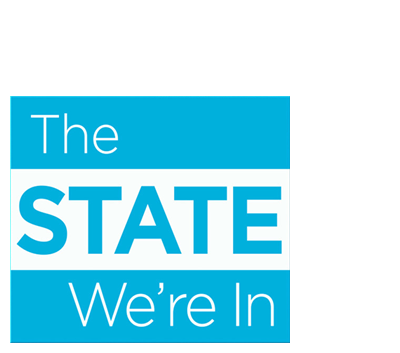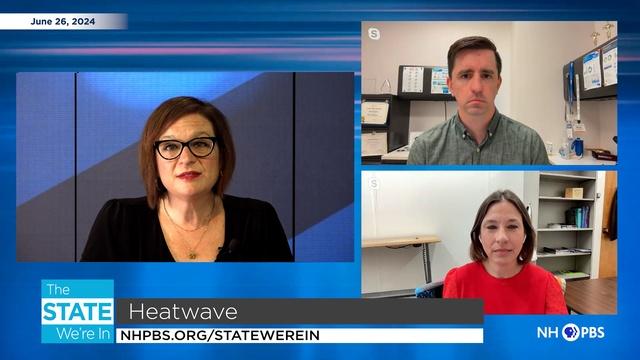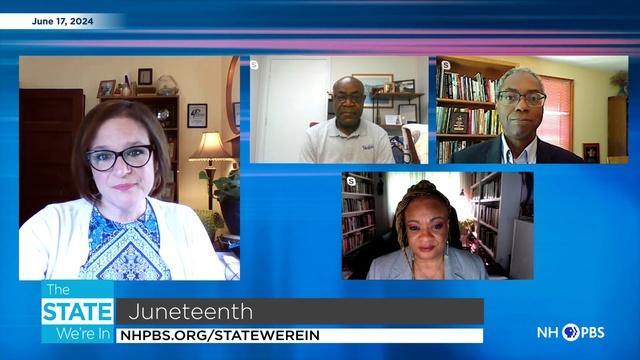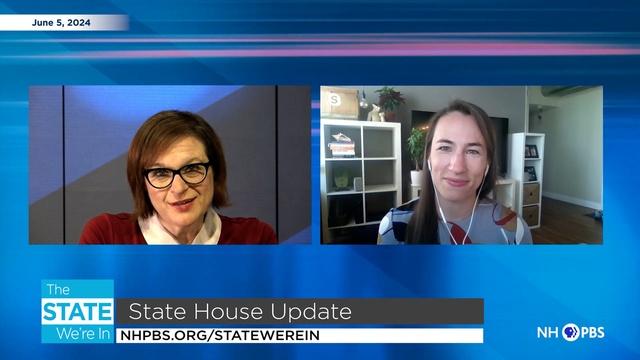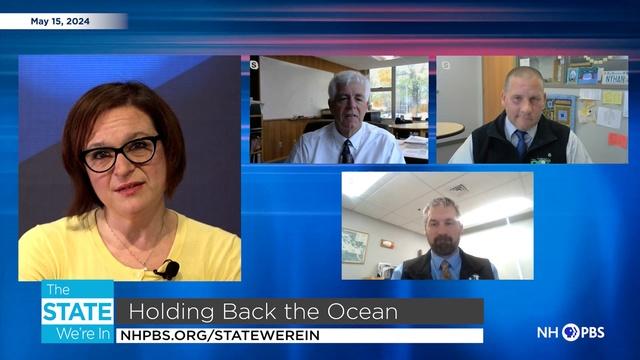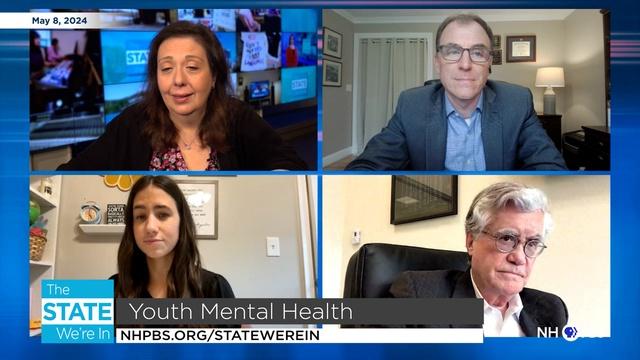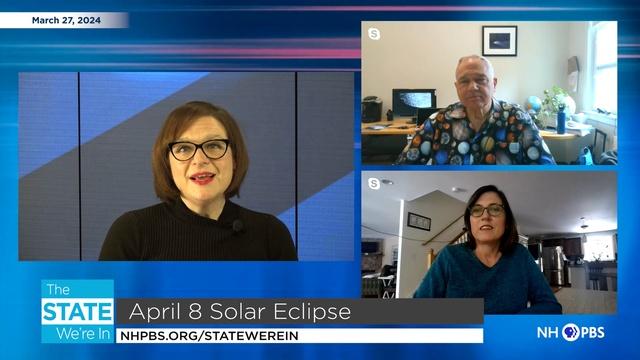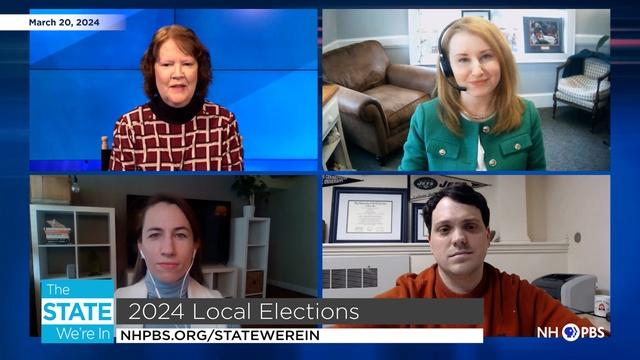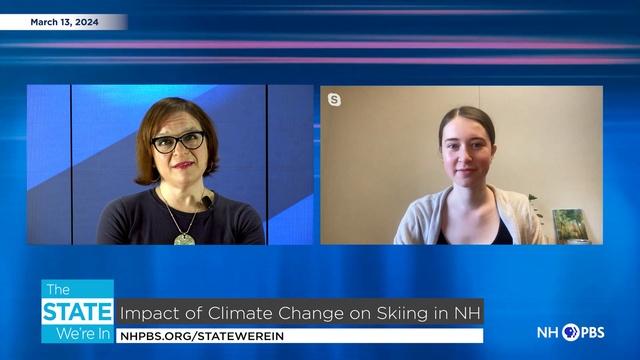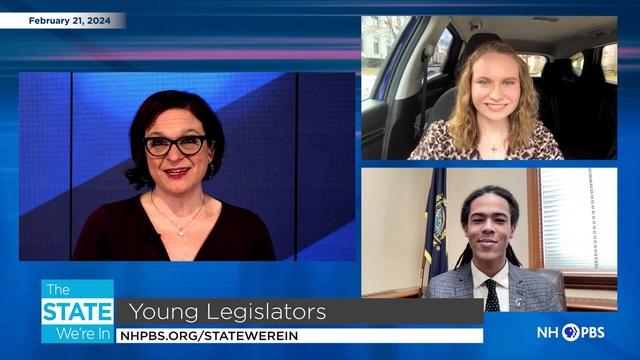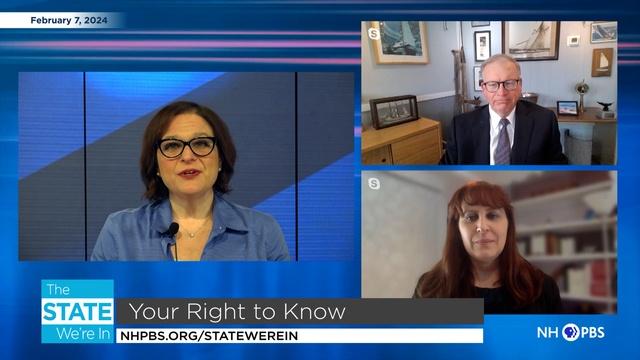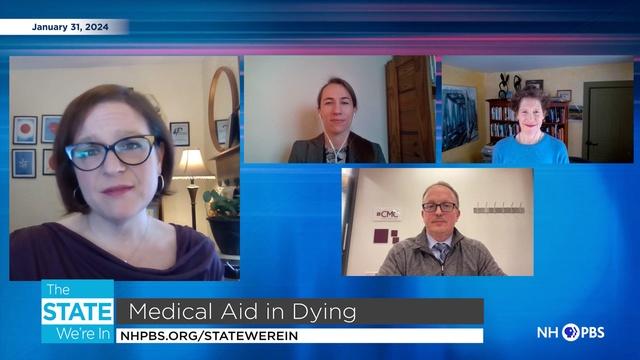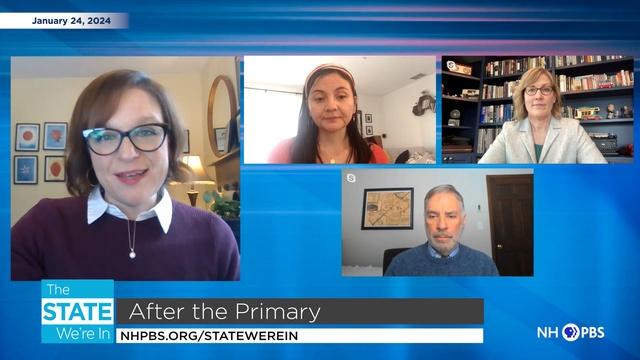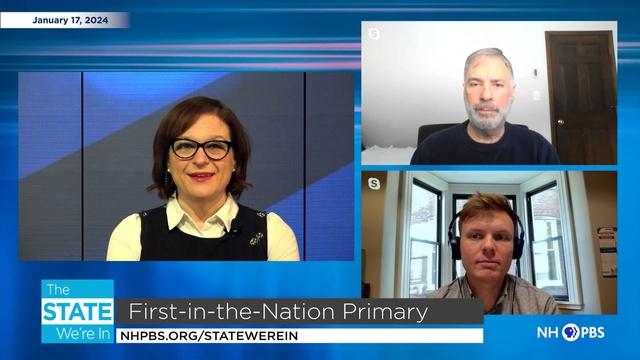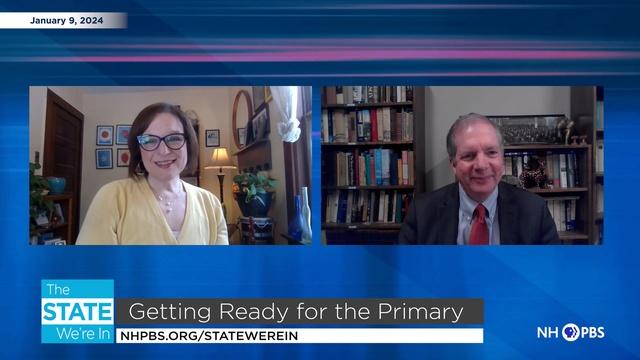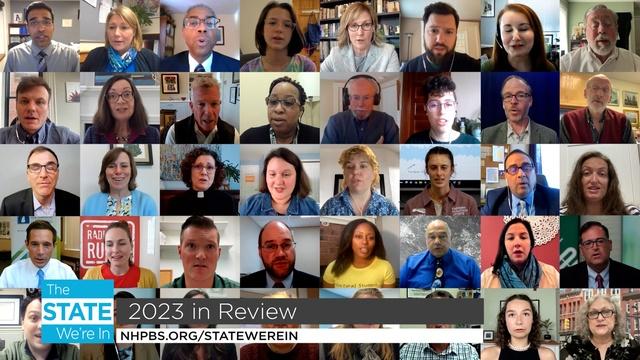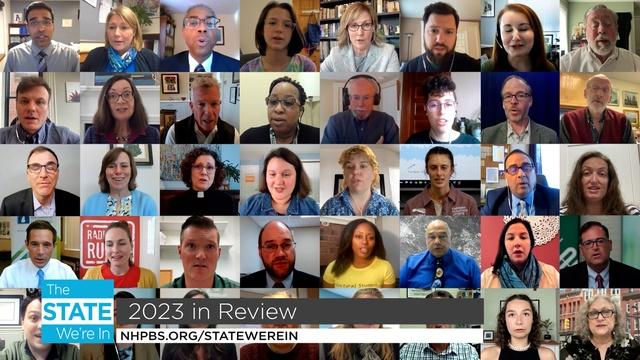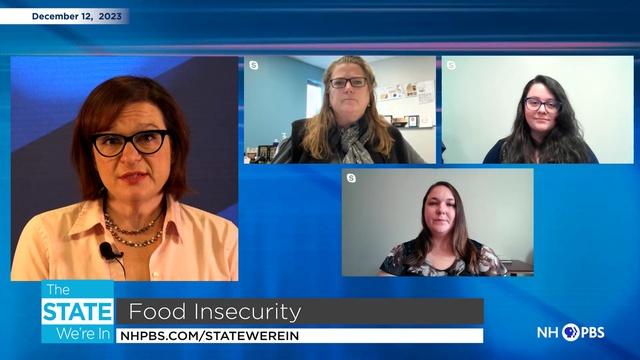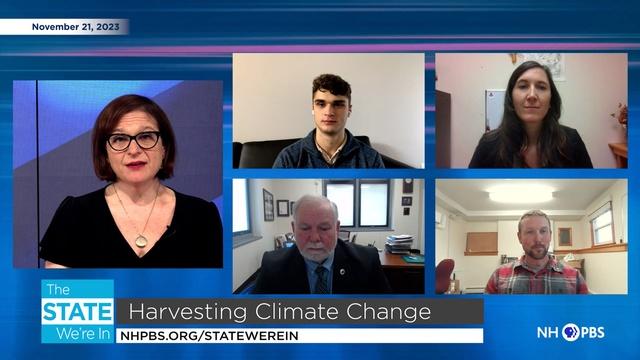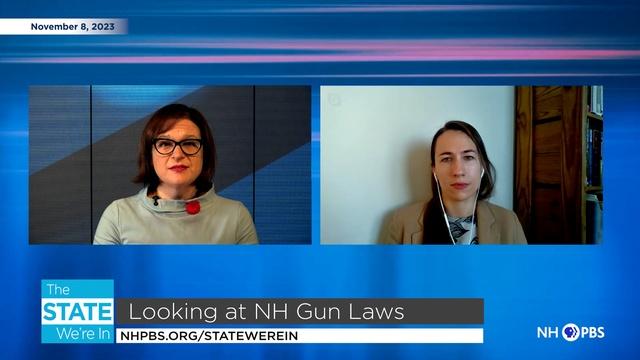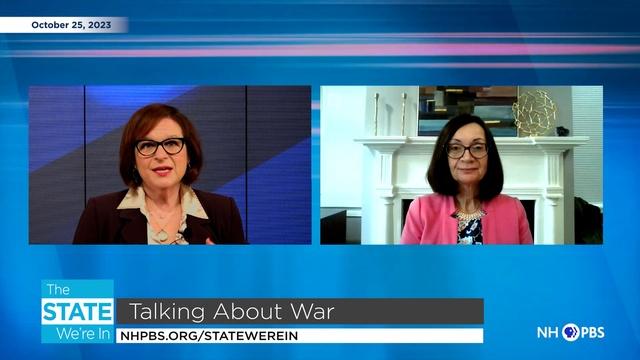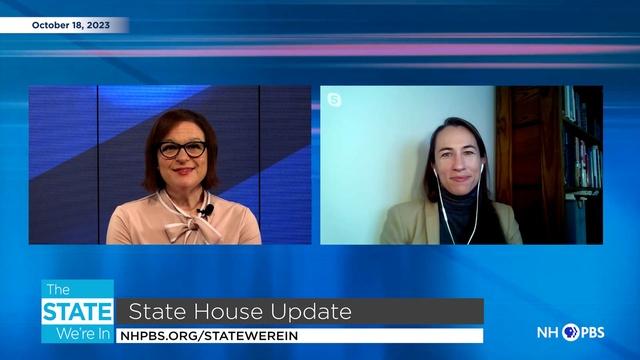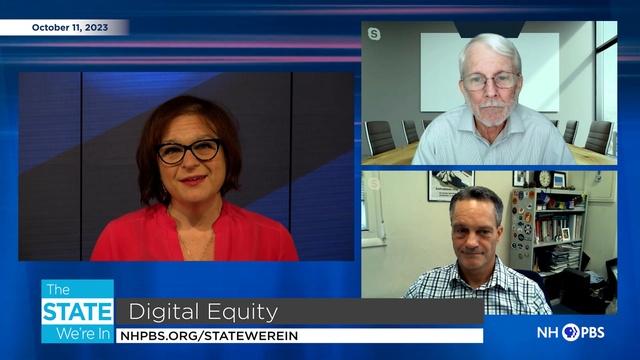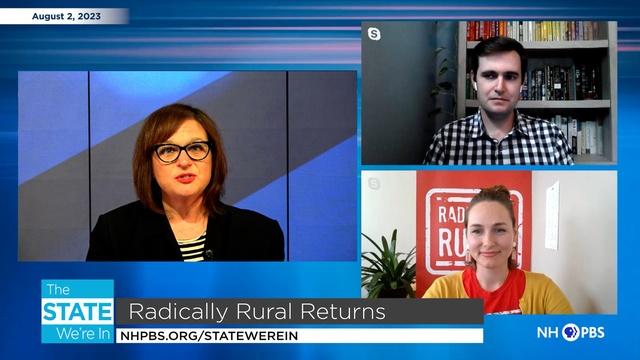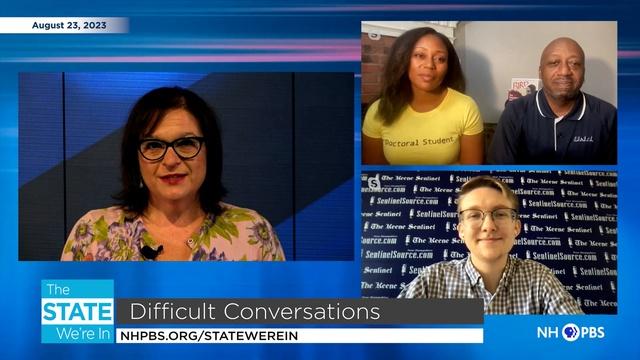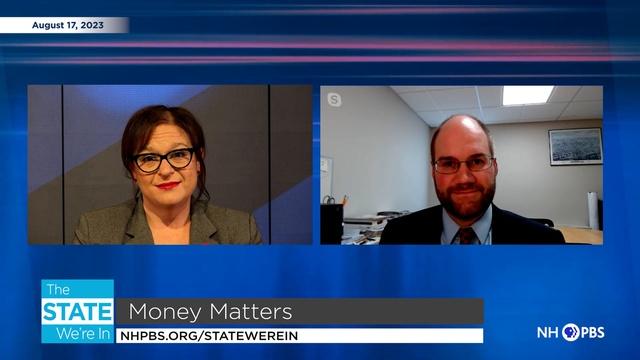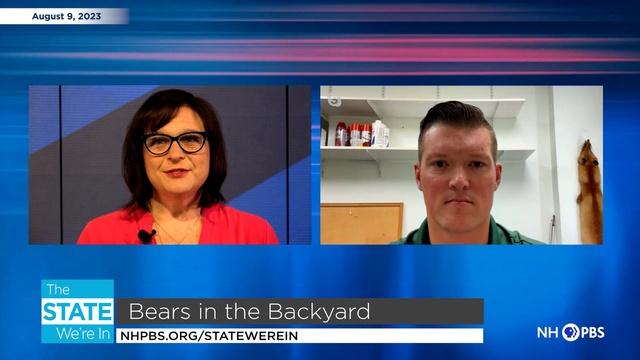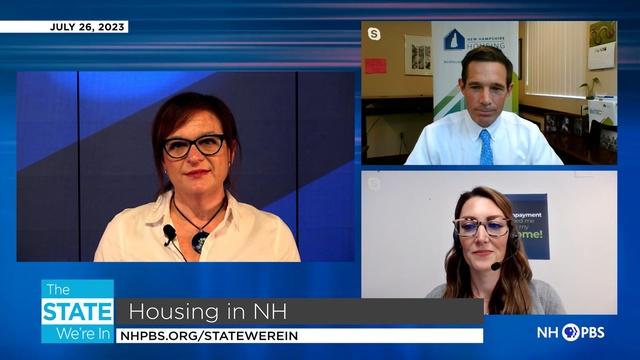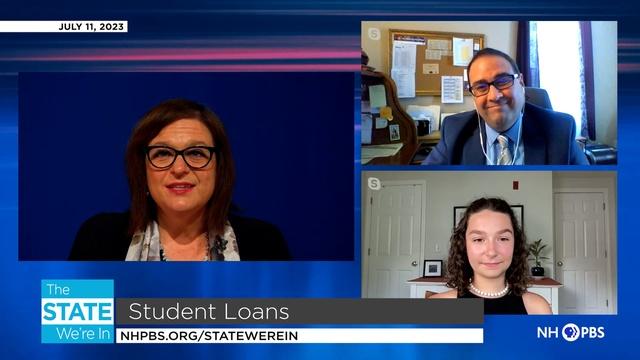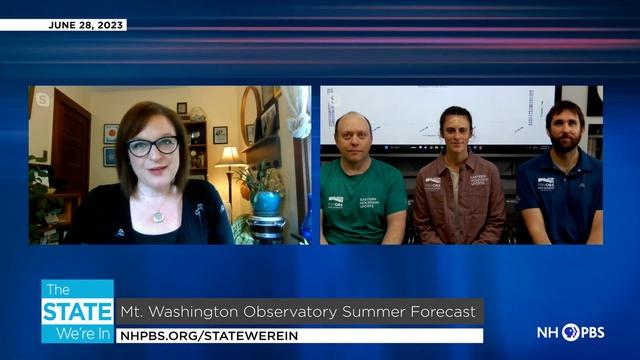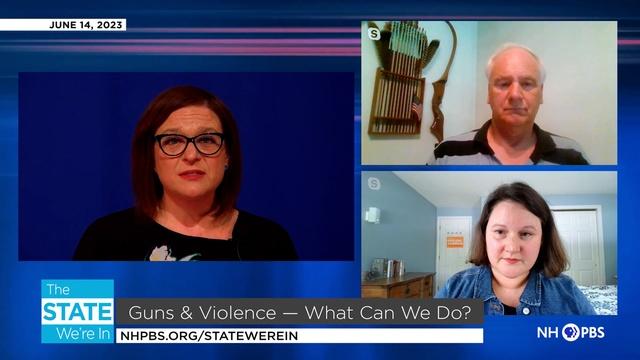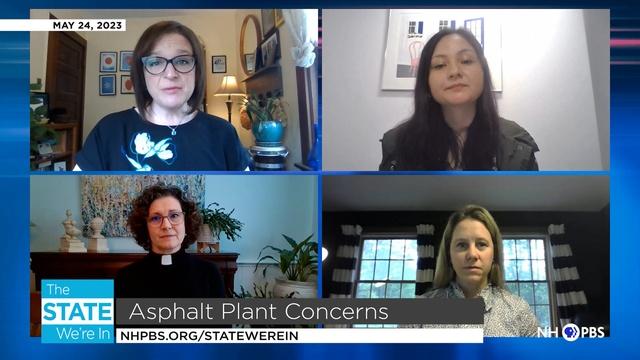Remote Learning and Attendance Issues
From: Granite State News Collaborative
Remote Learning, Attendance and Learning Time
By John Bassett
Granite State News Collaborative
When Sunapee Middle-High School’s attendance rate is published next fall, Principal Sean Moynihan expects that despite the switch to remote learning, his school’s numbers might be even higher than they were last year. This is a bold statement. The school’s 2018-19 attendance rate was 96.1% -- one of the highest in the state.
But Moynihan said that the numbers coming out this fall are probably misleading. Not only are they likely to be artificially high thanks to the district’s relaxed attendance policies during remote learning last spring, the numbers obscure a bigger issue -- how much harder it was even with laptops and good internet for his school to stay in touch with students during remote learning.
Sunapee Middle-High is a relatively small school -- enrollment 251 -- with enough computers on hand to make sure every student grades 6 and up went home with one when remote learning began last spring. In a parent survey sent out by the district at the end of March, more than 99% of respondents said that their student had access to the technology they needed for remote learning.
But to make sure that teachers were focusing their energy on engaging with students, Moynihan told teachers that the attendance policies would be relaxed. “Typically we’re taking attendance at 8 AM every day,” he said. “But during COVID, we just asked our teachers and students to engage with each other. As long as a student engaged in class at some point during the week, we counted them as present.”
This was a surprisingly common policy last spring, both in NH and nationwide, and was far from the most extreme. According to a study published in June by the University of Washington, half of all school districts in America stopped tracking attendance completely.
Though helpful in allowing teachers to focus on their students’ engagement, Sunapee’s policy created a new set of issues. Because not all teachers set specific times when students had to check into their classes, if a student stopped participating in classes online and stopped responding to messages, there was some ambiguity about how long a teacher should wait before telling the administration that there was a problem. The administration met daily to review and identify these at-risk students.
When laptops and wifi couldn’t bridge the gap between teacher and student, the task of maintaining ties fell largely to Sunapee Middle-High’s two full-time guidance counselors. “To keep students at the same level of engagement they were used to from previous years,” Moynihan said, “the guidance counselors needed to do a lot more work.” Even if only 25 more students needed additional support, he said, for just two guidance counselors the increased frequency of interactions was “a lot” to handle.
But last spring, the guidance counselors, teachers, and staff managed to keep track of many more students than usual. As a result, Moynihan said, Sunapee Middle-High did not see a spike in cases of truancy or dropouts.
In preparation for families’ and educators’ return to school in August, the Granite State News Collaborative has examined how attendance policies played out across the state last spring..
To answer this question, we identified two types of schools -- ones where student attendance is typically very high, and ones where it is typically very low -- and identified a relatively large and small school of each type. After selecting four exemplary districts -- Sunapee, Bedford, Franklin, and Manchester -- we looked for patterns in how their attendance policies were defined and implemented.
Our investigation showed that Sunapee’s experience echoed a state-wide trend. Even though digital technology was critical in allowing many districts to keep in touch with their students, for some of the most disadvantaged students in the state even these expensive tools were insufficient. In each district, guidance counselors and social workers played a key role in maintaining lines of communication between teachers and their students, raising questions about the role that these staff members will play in the upcoming school year.
In Bedford, strong community helped keep student engagement high
Bedford and Sunapee had many similarities in their approaches for attendance during remote learning, especially regarding protocols for following up with at-risk students. But compared to Sunapee, Bedford maintained a more rigid definition of student attendance, requiring more careful monitoring of students even though the Bedford School District’s enrollment was more than ten times larger. According to Superintendent Michael Fournier, much of the District’s success can be attributed to the support its students and schools received from the community.
Like Sunapee, the Bedford School District is one of the state’s standouts when it comes to attendance. Last year, Bedford High School had the lowest dropout rate of any high school with a thousand or more students. The District had one of the highest attendance rates in the state as well.
“In Bedford, we’re very lucky,” said Fournier. “As a general rule, we don’t have to spend a lot of time engaging students.”
Part of the reason for that, Fournier said, is how supportive the town is of the schools, no matter the issue. To illustrate just how responsive it is to the district’s needs, Fournier pointed to the Bedford Sewing Battalion, a group of parents and community members who Fournier said spend much of their days sewing masks. “A couple months ago, I asked them for a couple of hundred masks in the morning. By two in the afternoon, they were dropped off in my office.”
Thanks in part to community supports like these, Fournier said, attendance during remote learning last spring was essentially a non-issue.
But Bedford, like Sunapee, depended on chromebooks during the switch to remote learning. Going into this spring, every student in grades 5 through 12 had a chromebook, which had either been bought by families through the district or had been loaned to the student for use at school. When remote learning began, all students using loaner chromebooks were allowed to take them home. The remaining students from Kindergarten on up who didn’t have a computer at home were also loaned chromebooks by the district.
The chromebooks were so integral to remote instruction that when asked to imagine remote learning without chromebooks, Bedford elementary school teacher Kate Davison just laughed. “Oh my god, I would die,” she said “Without access to technology, remote learning is almost impossible.”
In her classroom and across the district, chromebooks were a crucial link between teacher and student. Powerschool, a remote learning platform, was used to track attendance. At Bedford High, Fournier said, students were required to virtually check in to each class during the timed block that the class was taught. The standard was more relaxed at the elementary level, Davison said, who was told to give a student full attendance if a student did any work at all in a day.
But as she had feared before remote learning began, even with this technology the transition was harder on some students than others. The students who struggled were often those whose families had multiple school-age kids and/or parents who were working from home. Similar to Sunapee, each school had a plan to identify and support students who had issues like these, often involving the same escalations from teacher to administration to guidance, and finally to the police or the State if a wellness check was needed.
For some students, this was an effective strategy. One student in Davison’s class, for example, struggled at first to access online materials, especially videos, because they were using an outdated computer that could not easily interact with some of the school's more modern online learning platforms. In Davison's experience, this was a major issue for many families. Thankfully, for the student in Davison’s class, the issue was quickly fixed. Once the student began using a newer computer and had more regular meetings with members of the teaching staff, Davison said that “everything went more smoothly.”
But in a small number of cases, the problems were more complicated. “Everyone had access to some kind of device. But there were some kids who even if they had devices, they were having trouble,” Davison said, often due to the lack of daily in-person support and socialization. As a result, over time some of these students became distant and difficult to re-engage, despite the continued efforts of the parents, teachers, and staff.
Fournier agreed, emphasizing that these issues were likely faced in many districts. “You're going to have a continuum of students who are going to be engaged no matter what, because they're highly motivated to do well,” Fournier explained. “But you're also going to have a subset of students who are really going to have a difficult time engaging without somebody actively investing time and effort to working with them to make sure that they're engaged in what they're doing.”
In Franklin, quick decisions and guidance counselor follow-up kept many high-risk students engaged
Unlike Bedford and Sunapee, Franklin went into remote learning without a strong track record for keeping students in school. But thanks to recent Investments in technology, a speedy transition to online learning, an unusually flexible attendance policy, and an experienced guidance team, Superintendent Daniel Legallo said that the district had no more issues with attendance than it was used to in previous years.
Based on annual high school dropout rates and district-wide attendance, Franklin should be at the opposite end of the spectrum from Sunapee and Bedford. Despite being a relatively small school (2018 fall enrollment: 289), Franklin High School had one of the highest annual dropout rates in the state in 2018-19, at 4.67%. Franklin School District also had one of the state’s lowest district-wide attendance rates, at 89.1%.
Legallo noted that the community context for Franklin has to be considered alongside these numbers. Many students in Franklin live in situations “where school just doesn’t take precedence over the basic needs we have,” he said. As a result, “we have more than our fair share of instances where [teachers] have to make a special effort to reach out to students.”
In order to overcome this challenge, Legallo thought that having 1:1 laptops was key to the district’s successful transition to remote learning. “It really let us know what was going on,” he said.
Thanks to some strategic budgeting and grants in the last five years, before remote learning the Franklin School District already had chromebooks for in-school use for all of its roughly 850 students in grades 1-12. When the district got word from the governor that remote learning would start in the middle of March, the district pivoted almost immediately. Remembering how students tended to be harder to re-engage after a long vacation, the district tried to make the switch with as little downtime as possible. “We figured we were gonna lose more kids if we waited,” Legallo said.
So in just three days, the district’s three schools distributed more than 850 chromebooks. “It was quite an operation,” Legallo said. The chromebooks had never left the school before, but within a few days all that technology was at home with students.
Once the district switched to online learning, the chromebooks were central to helping teachers and counselors identify at-risk students. Using the educational software GoGuardian, the district’s IT department could keep track of every student’s activities on the computer and easily identify those students who were not engaging in class.
But unlike Bedford and Sunapee, during remote learning the Franklin School District did not try to define what a student had to do to be counted as present. Instead, Legallo said, they took what he called “the least dangerous assumption.”
“We marked everybody present for the whole time,” he said, since “there was no way to track attendance during a situation like that.” Rather than having teachers spend time coming up with ad hoc rules, Legallo said he wanted to make sure they focused on instruction.
As a result, guidance counselors in Franklin also played a central role in keeping track of students. In part because the guidance counselors had been working with many students even before the shift to remote learning, Legallo said, “we knew our kids, and we knew our families.” Although the emergency attendance policies meant that the numbers for attendance in Franklin cannot be compared to previous years, Legallo estimated that remote learning did not make attendance any more of any issue than it was before last spring.
In Manchester, laptop shortage inspired creative solutions
Manchester, with a total enrollment of more than 13,000, is the state’s largest district and is the only district profiled here that did not have enough computers for all of its students. But like Franklin, it has a long history of challenges with keeping students in school, which meant that during remote learning, Manchester’s educators and families faced an extraordinarily difficult challenge. Their uneven success during remote learning illustrates the importance of both digital technology and the in-person visits that are often required to keep the most disadvantaged students engaged.
Manchester, like Franklin, faced more challenges with attendance before remote learning than almost any other district in the state. The Manchester School District had one of the state’s lowest attendance rates (92%) in 2018-19. Manchester Central, the district’s largest high school and one of the largest high schools in the state, had the highest annual dropout rate (3.75%) of any school with more than 1,000 students.
But unlike Sunapee, Bedford, or Franklin, the Manchester School District did not have enough chromebooks for all its students. According to Assistant Superintendent Amy Allen, the district had roughly one computer for every three or four students. Allen said in an interview that the District handed out over 3,600 laptops to students during remote learning last spring, but this still left many students without the technology they needed.
(To clarify how many of the district’s students still needed laptops but could not get one, Allen deferred to the District’s IT Department, which did not immediately respond to requests for comment. The District’s main office was also unable to make any of its high school principals or assistant principals available for interviews in the week leading up to this article’s publication.)
Given the shortage of laptops, even though some core elementary school materials and some secondary school materials were made available online, documents published on school and district websites show that its teachers were asked to distribute much of their work as paper copies. Starting March 19, the schools distributed learning packets to students. These were distributed at bus stops and schools.
Despite these logistical challenges, the Manchester School District mandated daily attendance -- like Bedford, but without the help of 1:1 chromebooks. On March 16, students were told to expect daily check ins from their teachers via phone or email. In order to better understand how and why students were engaging, the District also attempted to track student participation, based on students’ presence during live video instruction and their responsiveness to teacher communications, among other factors. Typically, if a teacher didn’t hear from a student for two or three days, the teacher would notify the school’s administration. Allen said that student attendance and engagement was uneven across the district. Two of the district’s highest-poverty schools had the lowest attendance and engagement rates: Beech Street Elementary and Henry Wilson Elementary.
Many of Manchester’s protocols for following up with at-risk students mirrored those in Sunapee, Bedford, and Franklin, but the district also came up with some creative solutions that were not possible in smaller districts. For example, Allen said that in some cases when an elementary school could not get in touch with a student, teachers were able to contact the family through an older sibling or relative attending an area middle school.
But despite the district’s efforts, some of the challenges posed by remote learning were not easily overcome. Joan Vallieres, an occupational therapist at Manchester’s Gossler Park and Parker-Varney Elementary Schools, emphasized that she thought the Superintendent “really tried hard,” but “there was a lot of frustration” from some of the families she encountered.
Both of Vallieres’ schools receive Title I funding, which is intended to support the nation’s poorest districts and schools. Vallieres said that this funding had allowed Gossler to buy enough chromebooks to provide for all of its students. This is one surprising aspect of how technology is distributed in the Manchester School District. Thanks to Title I funding, many of the district’s highest-poverty schools have laptops for every student. But because none of the district’s middle or high schools identify as Title I, Allen estimated that the largest shortages for laptops were at the secondary level.
But even with chromebooks at Gossler and Parker-Varney, some of Vallieres’ students struggled to stay engaged. Vallieres remembered one family in particular. When she or her colleagues would live stream video with the student, they would see in the background that “it was just chaos. Kids running around and screaming.” Vallieres remarked that it must have been “just overwhelming for the parents.”
This is where the social workers stepped in. “I think they’re vital to the school,” Vallieres said. “At Gosler we have some families that really need that support.” Gossler and Parker-Varney serve approximately 500 students each, but each school lists just one social worker on its staff directory.
If a student dropped out of touch, the social worker would reach out to them to ask why the student wasn’t getting online, or would stop by the house to bring them the pencils and paper they needed to do their learning packets. Even with this additional attention, sometimes the communication was difficult. One family, Vallieres remembered, stopped paying their internet bill. Other parents “wouldn’t even answer the phone.”
“You know, some kids, we’re their family for some of them,” Vallieres said. “We were the connection that kept them going.” Without that connection, she said, “they were just done.”
Tightening policies for the fall
As schools plan to reopen this fall, attendance policies and how schools communicate with their students are one of the issues school leaders in Sunapee, Bedford, Franklin, and Manchester say that they plan to revisit.
In Sunapee, the district plans to return to in-school learning in the fall, resolving many of the attendance and communication issues that the district faced last spring. In a letter sent to parents on July 17, the District wrote that parents who are not comfortable sending their child back to school will have the option of enrolling them in the State’s K-12 public virtual school, the Virtual Learning Academy, which is free to all NH students.
In Bedford, the attendance policies are not expected to change significantly from last spring, when attendance was taken regularly. “If administrators and our families were to bring attendance to our attention, we of course would [revisit it]. But at this juncture,” Fournier said, “that's really not something that we saw as problematic”
Instead, according to its reopening plan announced on July 27, Bedford will offer all its students K-12 the choice to learn remotely, similar to last spring, or under a hybrid model, which would include some in-person instruction in the mornings and some live instruction in the afternoons. To make chromebooks more readily available to students, the District is also planning to purchase more chromebooks at an estimated cost of roughly $100,000. (Fournier emphasized that this was a preliminary figure.)
As of July 29, the Franklin School District had not yet published its reopening plans. In an interview on July 21, Superintendent Legallo suggested that however the District reopens next fall, it would likely include more live instruction and more frequent attendance checks. Legallo maintained that it would likely be too difficult to do daily checks, but weekly checkers were likely. Legallo emphasized, though, that attendance was less important than competency. “What people forget is that we have kids who go to school all the time, but they don’t do work all the time. So in a remote setting, how do you determine attendance? It has to be based on their engagement.”
The Manchester School District is expected to publish its reopening plans in early August. Both of the two preliminary plans described by Superintendent John Goldhardt to the Manchester School Board on July 20 would require the District to take attendance remotely for at least some of its students. Assistant Superintendent Allen added that the District is expected to request a $1 million bond to help further develop the district’s technology, including laptops for remote learning. The District’s Technology Resource Center did not immediately respond to written requests for comment regarding how much of this money will be put toward toward student laptops.
None of the four districts plan to hire additional guidance counselors or social workers.
These articles are being shared by partners in The Granite State News Collaborative. For more information visit collaborativenh.org
Watch Online
The Monitor's Seized and Sold
A look at the Concord Monitor's "Seized and Sold" series, which examines evictions and foreclosures.
Return to the
The State We're In
Main Page
Support for The State We're In is provided by New Hampshire Charitable Foundation, Eversource and Hitchiner Manufacturing Co., Inc.
The State We're In is produced in partnership with the Granite State News Collaborative and the students and staff of the Marlin Fitzwater Center for Communication at Franklin Pierce Unversity in Rindge, NH.
How can we beat the heat?
Heat waves in New England, is this our future?
Juneteenth
As the oldest known nationally celebrated event commemorating the end of slavery in the US.
Granite State Homelessness
The first in a series about homeless in the Granite State.
State House Update - 6/5/24
An update on the latest bills before the Legislature.
Waste Not, Want Not
Host Melanie Plenda and guests discuss food waste and how to keep it out of landfills.
Holding Back the Ocean
Host Melanie Plenda speaks about flooding impact on critical state infrastructure.
Youth Mental Health
Examining the Mental Health of high school students.
Preventing Child Abuse
A look at preventing child abuse in New Hampshire.
Educational Standards
A look at proposed revisions to the state's educational standards, also known as 306s.
Housing Solutions
Host Judi Currie speaks with community planners and affordable housing advocates.
April 8 Solar Eclipse
Host Melanie Plenda talks about the upcoming eclipse with guests.
2024 Local Elections
Host Judi Currie speaks with several experts on the key issues surrounding the election.
Impact of Climate Change on Skiing in NH
Melanie Plenda speaks with freelance journalist Beatrice Burack about her series.
Poverty & Food Insecurity Following the Pandemic
Poverty and food insecurity rates here before, during and after the pandemic.
What to Know About AI in NH
Host Melanie Plenda discusses the ins and outs of artificial intelligence.
Young Legislators
State Reps. Jonah Wheeler and Valerie McDonnell join host Melanie Plenda.
Lessons from the Primary
Secretary of State David Scanlon discusses the New Hampshire primary.
Your Right to Know
We discuss HB 1002, which would allow public bodies and agencies to charge up to $25/hr.
Medical Aid in Dying
The NH House Judiciary Committee will hold a hearing on HB1283.
After the Primary
A discussion about the NH Primary results.
First-in-the-Nation Primary
We talk to veteran reporters about the upcoming New Hampshire Primary.
Getting Ready for the Primary
The New Hampshire presidential primary will take place on January 23rd.
Asset of Diversity
Members of the Business Alliance for People of Color discuss how diversity can be an asset
2023 in Review
A look back at "The State We're In."
2023 - Compelling Quotes
The best quotes from 2023.
Nature's Super Bowl
Learn about two upcoming eclipses with prime viewing spots in New Hampshire.
Food Insecurity
Staffers from the NH Food Bank discuss food insecurity in New Hampshire.
NH School Funding
Learn about the recent ruling that could change the way public schools are funded in NH.
Harvesting Climate Change
Melanie Plenda speaks with local agricultural experts about climate change.
Looking at NH Gun Laws
New Hampshire's gun control laws and preventing a mass shooting.
Local Elections
The importance of local elections and how to prepare for them.
Talking About War
How do you talk to kids about gun violence and war?
State House Update
Citizens Count's Anna Brown discusses some of the bills the state Legislature will tackle.
Digital Equity
Bridging the digital divide in New Hampshire.
Fall Health Outlook
Infectious disease expert Dr. Michael Calderwood talks about the fall health outlook.
Education Standards
A look a proposed revisions to the state's educational standards, also known as 306s.
Radically Rural Returns
The popular small town summit is back for a sixth installment.
Difficult Conversations
Different approaches to the same goal.
Money Matters
More New Hampshire residents are finding it difficult to afford everyday expenses.
Bears in the backyard
More bears are showing up in backyards and social media feeds.
Housing in NH
The 2023 NH Residential Rental Cost Survey Report and what it means for NH residents.
The State of Journalism
Host Melanie Plenda talks through the state of journalism in New Hampshire.
Student Loans
Host Melanie Plenda talks with Financial Aid Professional and a recent grad about debt.
NH Legislature ends its session
Host Melanie Plenda talks with Citizens Count's Anna Brown.
Mt. Washington Observatory Summer Forecast
Host Melanie Plenda speaks with scientists from the Mount Washington Observatory.
Neo-Nazis in NH
Host Melanie Plenda talks about combating hate and misinformation around a drag story hour
Guns & Violence -- What can we do?
Host Melanie Plenda looks for common ground from two perspectives.
Asphalt Plant Concerns
Hear concerns about a proposed asphalt plant in Nashua, which has residents worried.

